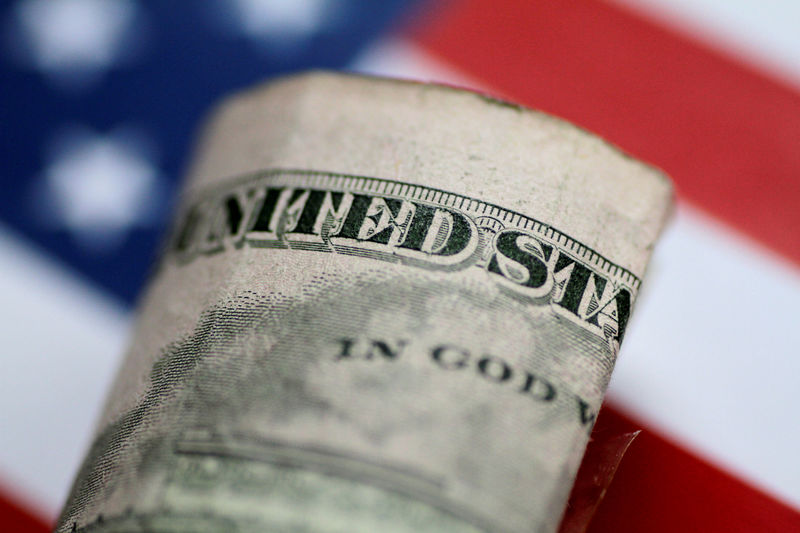Bitcoin price today: gains to $120k, near record high on U.S. regulatory cheer
Investing.com - The U.S. dollar traded in tight ranges Wednesday, as uncertainty over the tariff plans to be imposed by the Trump administration later in the session kept market participants largely on the sidelines.
At 03:10 ET (08:10 GMT), the Dollar Index, which tracks the greenback against a basket of six other currencies, edged marginally lower to 103.900, after reporting a fall of just over 3% in March, its worst monthly performance since November 2022.
Dollar steady on Liberation Day
U.S. President Donald Trump is expected to unveil more trade tariffs later in the session - the so-called "Liberation Day" - and White House spokeswoman Karoline Leavitt said on Tuesday that these duties would take effect immediately after the announcement.
Trump has argued that the tariffs are necessary to correct imbalances between the U.S. and its foreign trade partners, as well as a tool to bring manufacturing jobs back to the country.
There remains a great deal of uncertainty about the size and scope of these trade barriers, but the Washington Post reported that the administration is considering a plan that would raise duties on products by about 20% from nearly every country.
“Our view remains that downside risks dominate for all currencies against the dollar today,” said analysts at ING, in a note. “The U.S. may try to announce the harsher measures today before eventually scaling it back, which may still force a positioning rotation into USD and JPY with high beta currencies taking the bigger hit.”
“But dollar outperformance today will not be indicative of more sustainable strengthening. Time will be needed to assess how long tariffs will remain in place,” ING added.
Euro slips ahead of tariffs
In Europe, EUR/USD traded 0.2% lower to 1.0789, easing slightly ahead of the key tariffs announcement.
Europe will respond to the likely implementation of U.S. tariffs in a proportionate manner but will not escalate tensions under any circumstances, French industry minister Marc Ferracci said on Wednesday.
"Europe has always been on the side of negotiation and calming things down, because trade wars, you know, only produce losers," Ferracci told RMC radio.
“Should a 20% carpet tariff materialise, the argument for a EUR/USD decline will become more compelling, but perhaps we need to see even tougher targeting of EU products or countries to dent the euro’s relatively safe status against other high beta currencies,” said ING.
The euro also slipped after data released on Tuesday showed that eurozone inflation experienced a slight decrease last month, which may influence the European Central Bank to implement another interest rate cut later this month.
The ECB has cut interest rates six times since June, and next meets on April 17.
GBP/USD traded 0.1% lower to 1.2908, amid caution ahead of the news from Washington.
Prime Minister Keir Starmer and Trump held talks last weekend about the possibility of a trade deal, but Downing Street says it still expects the U.K. to be hit by more tariffs.
“The more markets will see room for the initial tariff announcement being watered down via negotiations, the more sterling can outperform the euro,” said ING.
Aussie dollar soars
In Asia, USD/JPY traded 0.2% lower to 149.66, after briefly rising past 150, despite increased safe haven demand for the Japanese yen.
USD/CNY edged marginally higher to 7.2710, as traders awaited more cues on Beijing’s retaliation against U.S. tariffs and stimulus measures to offset their economic impact.
AUD/USD rose 1% to 0.6304, with the Aussie dollar the standout performer in Asia after building approvals data read much stronger-than-expected for February, while Assistant RBA Governor Christopher Kent said the central bank will slightly hike its overnight market operations repo rate.
